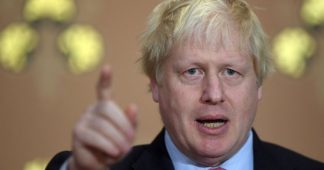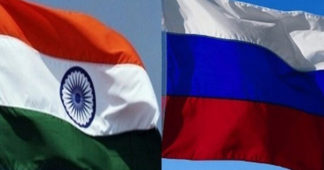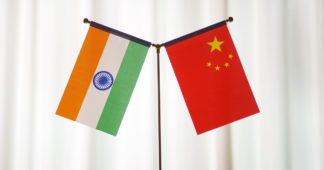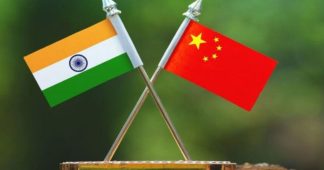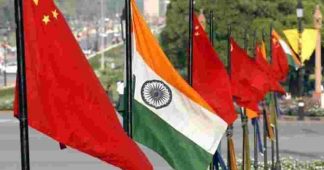By Anuradha Chenoy
Jul 20, 2022
India has made sure that no forum that it is part of takes a stance against Russia. India has ensured its strategic relations with Russia. The huge Indian market and defence capabilities enable India to retain strategic autonomy, writes Anuradha Chenoy, Adjunct Professor, Jindal Global University.
India-Russia relations, which have been time-tested, consistent and mutually beneficial, have gone through a trial by fire in recent days. India withstood collective Western pressure as it took a position of neutrality and subtle support for Russia as the Western alliance went hammer and tongs against the Russian operation in Ukraine. India has chosen not to endorse the West’s effort to isolate and condemn Russia in several international forms. We examine the Indian position on Russia in the context of a transformative international order and ask: has there been a greater renewal in relations?
The Context of the Changing World Order
NATO policies, as outlined by its new ten year strategic document (June 29, 2022) are in effect declarations of a Cold War 2.0. For NATO, the major threat in Europe is Russia, whereas its primary competitor and long-term threat is China. Any power that does not conform to Western desires can be earmarked for inclusion as a threat. The US-led West’s tactics to counter threats are hybrid and intersectional since their aim is primacy, from space to sea. Threats have strategic, military and nuclear aspects, but can be met with financial and trade exclusions, as well as technology and telecommunications controls and an emphasis on soft power. Neutrality is not acceptable in this schism and countries outside the blocs will be under pressure to take sides. This is where India and others in the Global South matter.
India’s Calculation
India has repeatedly abstained in the voting on resolutions in the Security Council and in the United Nations General Assembly that condemned Russian activity in Ukraine and refused Western attempts to isolate Russia in global forums. Prime Minister Modi in his conversation with President Putin has repeated the call for diplomacy and dialogue to resolve the Ukraine crisis, while India continues to maintain all relations with Moscow.
India imports about 60% of its defence needs from Russia and the supply has remained uninterrupted since the 1960s. It is integrated with Indian defence systems and promotes localisation, collaborations, and the export of military hardware to third countries. India benefits from technology transfers, missiles and nuclear submarines it can’t get anywhere else. Russia has collaborated with the Indian nuclear power programme through a period of US sanctions targeting India since the 1990s. Even as India has diversified defence imports, Russia dominates this sector and is likely to do so in the near future.
Sanctions on Russia can definitely impact Indian defence imports and the implications are under examination. India’s capacity to purchase from the West is used as leverage to avoid US legislation like the ‘Countering America’s Adversaries Through Sanctions Act’ (CATSA). India seeks exemptions from sanctions by leveraging its needs and markets.
India is buying oil at discounted prices and its oil imports from Russia have increased from 1% to almost 6% of its needs (1.2 million barrels per day in June 2022) and could increase further. Moreover, India’s consortium of state and private gas companies has invested a significant $10 billion in Siberian and other oil fields. Proposed links between the ports of Vladivostok and Chennai in India to facilitate a direct maritime route are on the drawing board. India is partnering with Russia to bypass the current ‘commodities shock’ caused by the sanctions. (Indian Express July 2, 2022). India, like most countries of the Global South, has always opposed unilateral sanctions, as they impact the most vulnerable people.
A significant conversation is underway on the revival of rupee-rouble trade. India paid in rupees for its S-400 missiles. Indian companies like Ultra Tech Cement are importing Russian coal and paying in Chinese yuan- a method that traders say could become more common. (Reuters, June 29, 2022) The BRICS mechanisms and its New Development Bank advocate that 50% of intra-BRICS trade be based on local/alternative currencies. However, clear, quick, transparent institutions need to be set in place to materialise such transactions.
Geostrategic Interests
Indian geostrategic thinking is shaped by unresolved border disputes with China and Pakistan. India has concerns about China’s claims to India’s north-eastern territories that have led to skirmishes along the border. The deepening Sino-Russian strategic partnership, where Russia could prioritise China over India, reflects a fear that the US is playing up and working on to convince India to shift away from neutrality. The US Secretary of Defense indicated to India that China is ‘hardening’ its positions along the Line of Actual Control, as he spoke about Taiwan in the same breath (Indian Express, June 12, 2022). The US needs India to contain China, so rifts between India and China favour their plan to wean India to their side. India favours a multipolar world and benefits from harmonious relations with Russia, the West and Global South, yet the thread of the Sino-Indian Border dispute will determine the future of Indian neutrality in a deeply polarised world.
India’s turn to neo-liberal policies has been accompanied with a prioritising of relations with the US, which is evident in increased trade and the diversification of defence imports. Agreements with the US to provide logistics support for their ships have been signed, an India is a member of the Quadrilateral Forum and military exercises like the RIMPAC that project NATO power in the Pacific. In addition to American soft power and Indians working in the US, Indian students in American universities are an important factor in this relationship. But India has made sure that no forum that it is part of takes a stance against Russia. India has ensured its strategic relations with Russia. The huge Indian market and defence capabilities enable India to retain strategic autonomy.
New Start?
There are many areas that need to be deepened to retain and accelerate Russia-India relations, in order to prevent their stagnation in a fast-changing world. The highest level leadership of both countries has been encouraging a deepening of trade. Even though this depends on the market, both states need to facilitate easier and less bureaucratised channels. Russia needs to tap into the medium and small scale Indian companies at the moment, as big companies risk being targeted by sanctions. Russia should take advantage of the Indian labour market, just as the countries of West Asia have done. Russia needs to deepen its scientific and technological links with India, as well as its huge service industry. Indian-Russian institutions should deepen their collaboration. Initiatives that have been proposed but are on the slow track, like the International North-South Transport Corridor, free trade agreements, labour visas, better mechanisms for rupee-rouble trade and links with banks need to be accelerated. This acceleration requires political will and creativity, and can immensely benefit both India and Russia. This is the way to not just accelerate relations, but to give them more ballast.
India and Russia engage with each other in many forums, including the BRICS, SCO, G-20, and others. Russia’s future lies with the Global South, as the West promises a long period of isolation for Russia and China. Given India’s competition with China, Russia and India will balance the new geopolitical order with caution. The long years to partnership and collaboration need to accelerate, as these are inputs to sustain a multipolar world.
Conclusion
India’s realist and transactional foreign policy is based on a cost-benefit analysis that shows that India will accelerate its partnership with Russia simultaneously with growing relations with the West. The Indian position of strategic neutrality on the question of Ukraine is a step back from its tilt towards the US, where India signed various agreements that provided the US with naval facilities in India. Russia has confidence in its partnership with India and this provides a foundation for establishing further material and people-to-people relations. The Indian and Russian markets should seize this opportunity to link with each other.
India is seeking exemptions from sanctions since these would endanger Indian defence imports from Russia. India is purchasing oil at concessional rates from Russia, and is using its huge market, strategic and economic capability to counter pressure from the US and stick to its position of neutrality. India will not jeopardise its relation with either Russia or the West.
India will retain this position during this period of international transition, de-globalization and uncertainty. India does not want to become part of any bloc that would coerce it to take sides. A combination of historical experience, current security and development challenges, regime stability and concerns about its unresolved border disputes with both China and Pakistan has shaped India’s response. India’s position as a neutral country with harmonious relations with Russia and the West will continue during this transition.
We remind our readers that publication of articles on our site does not mean that we agree with what is written. Our policy is to publish anything which we consider of interest, so as to assist our readers in forming their opinions. Sometimes we even publish articles with which we totally disagree, since we believe it is important for our readers to be informed on as wide a spectrum of views as possible.
